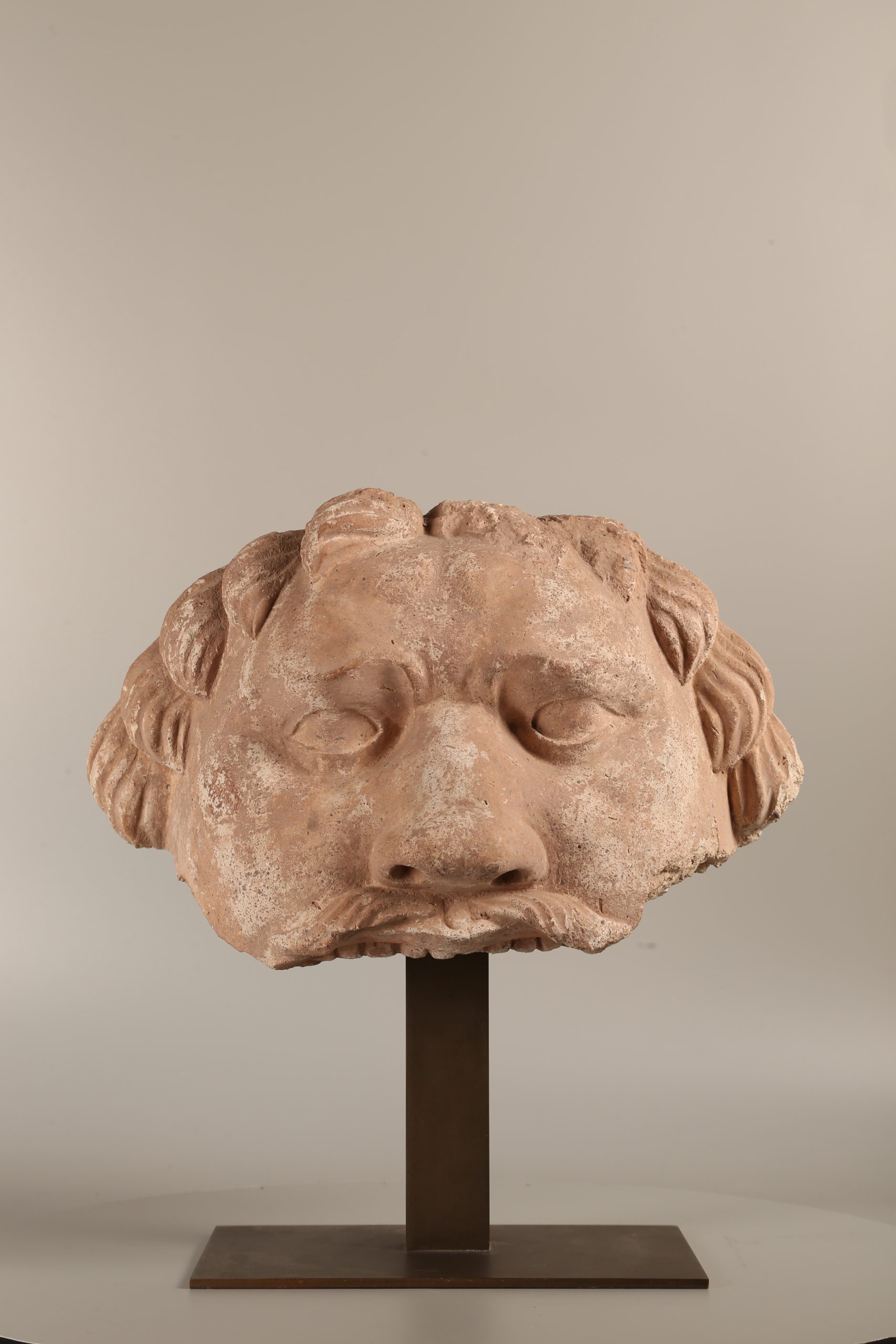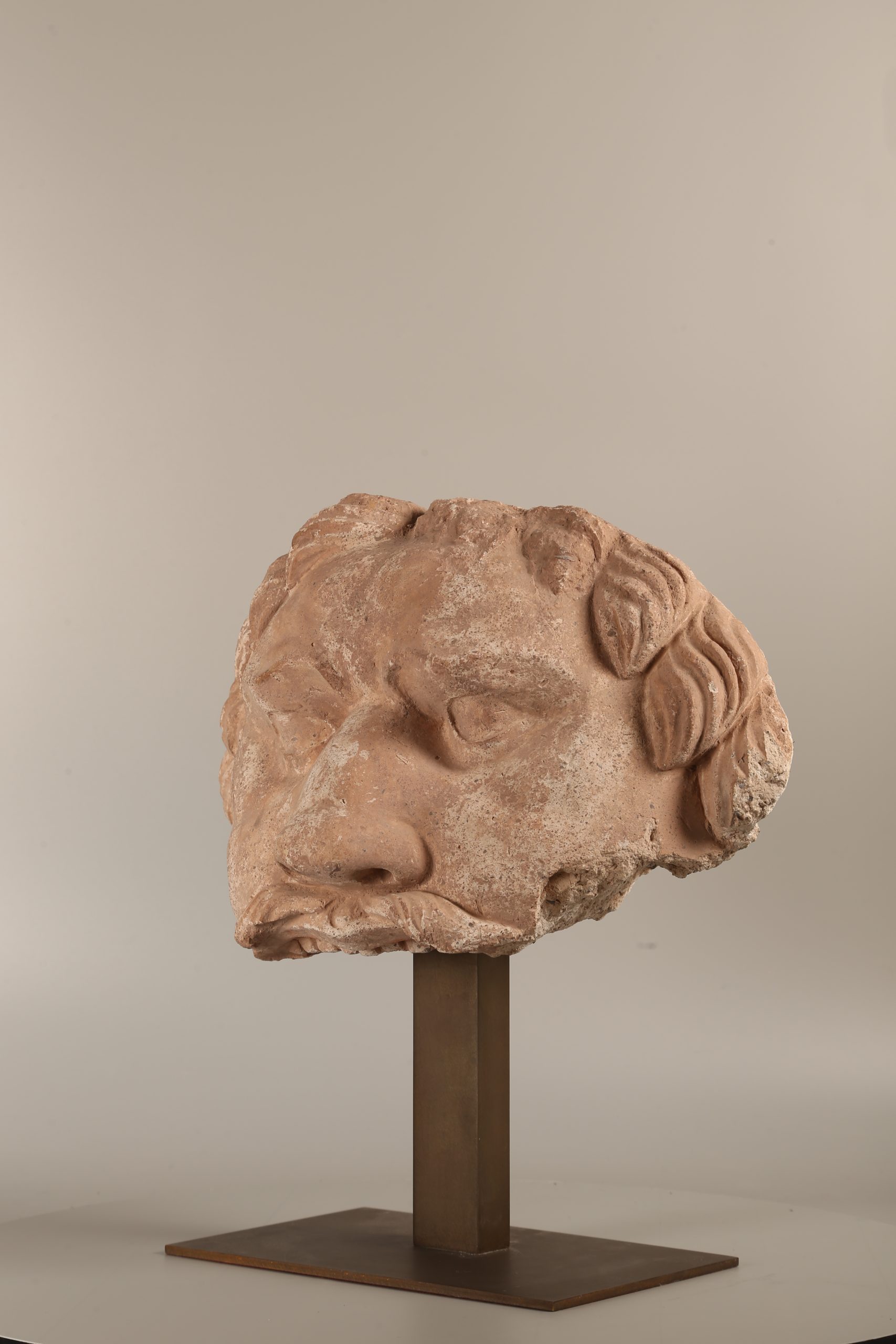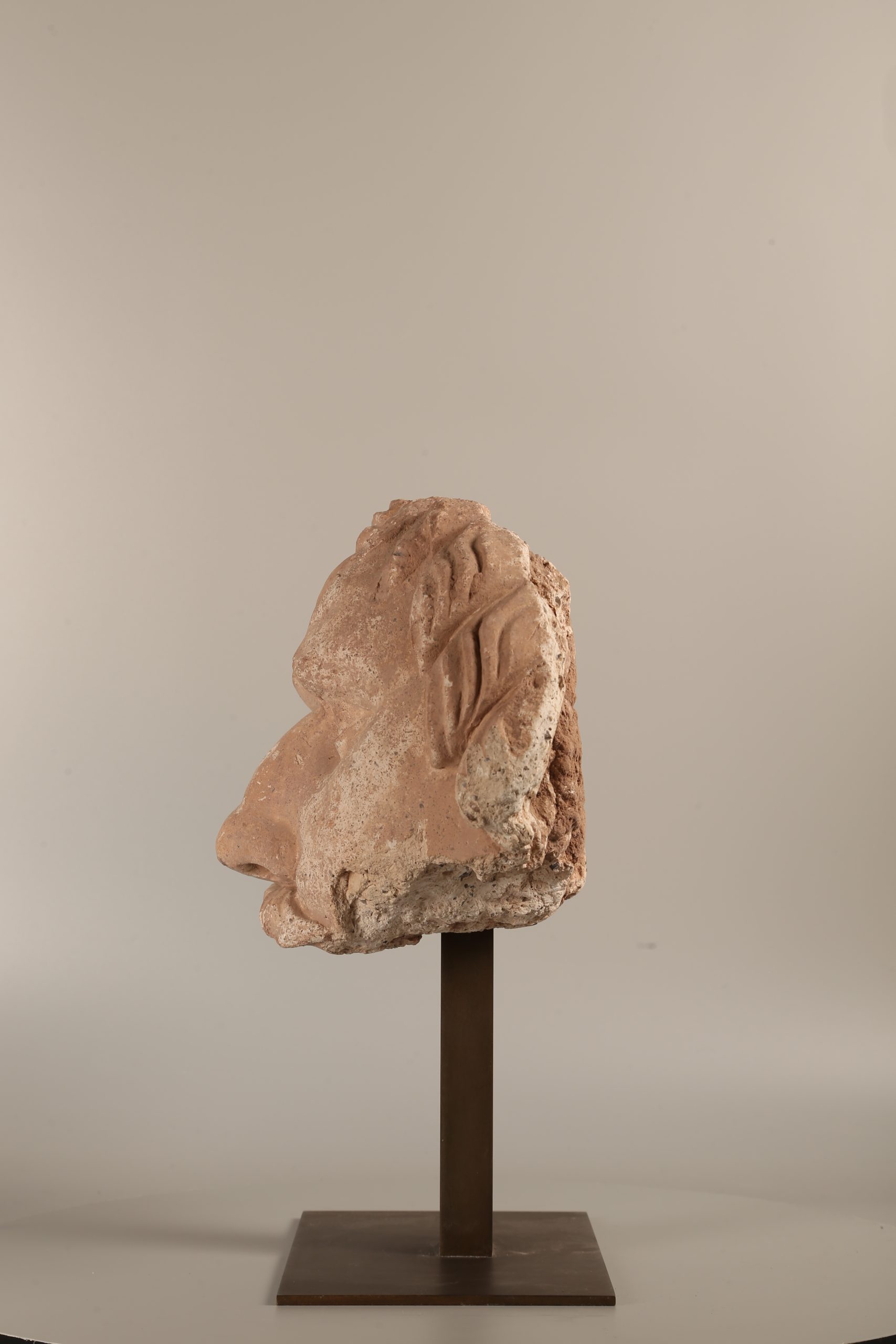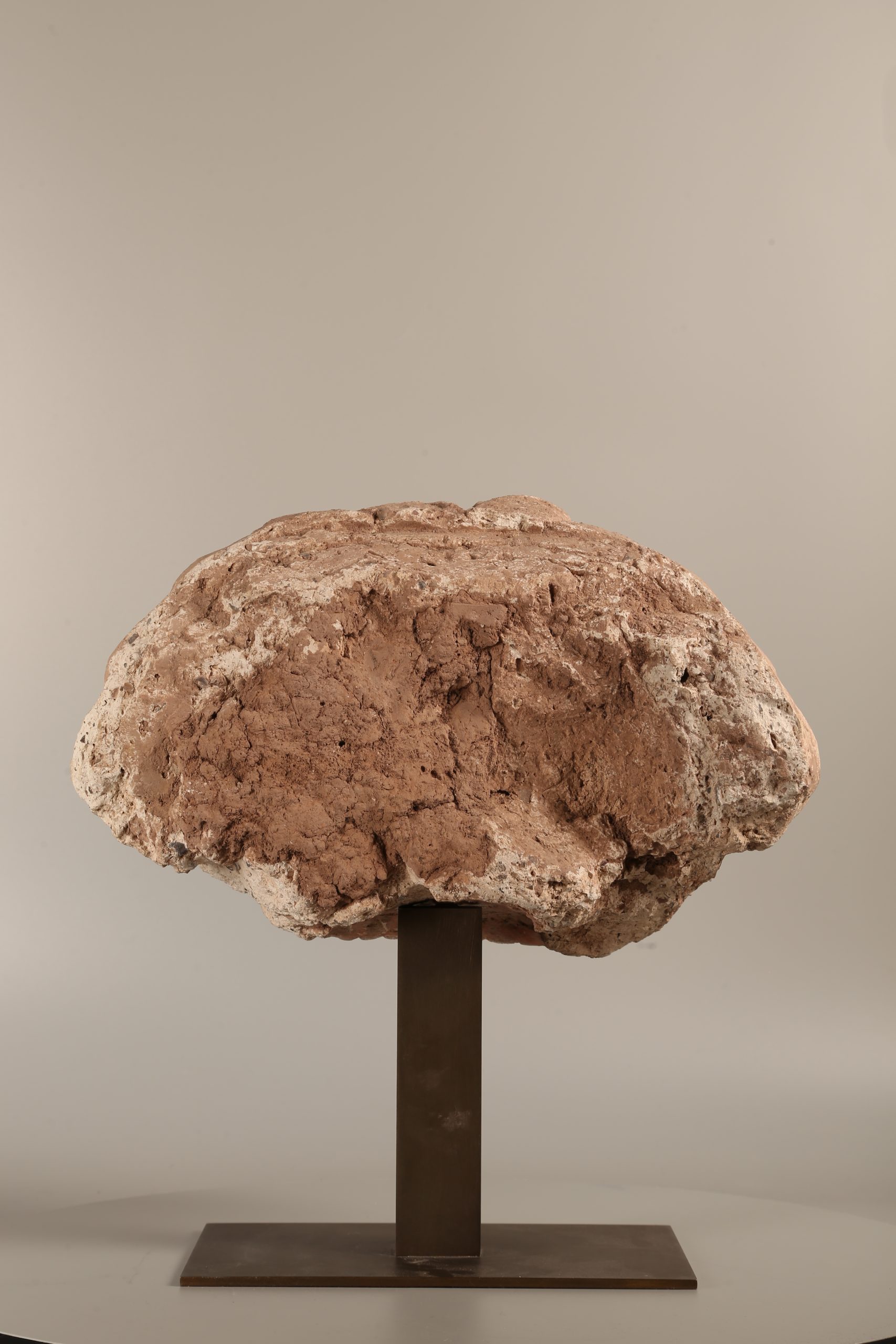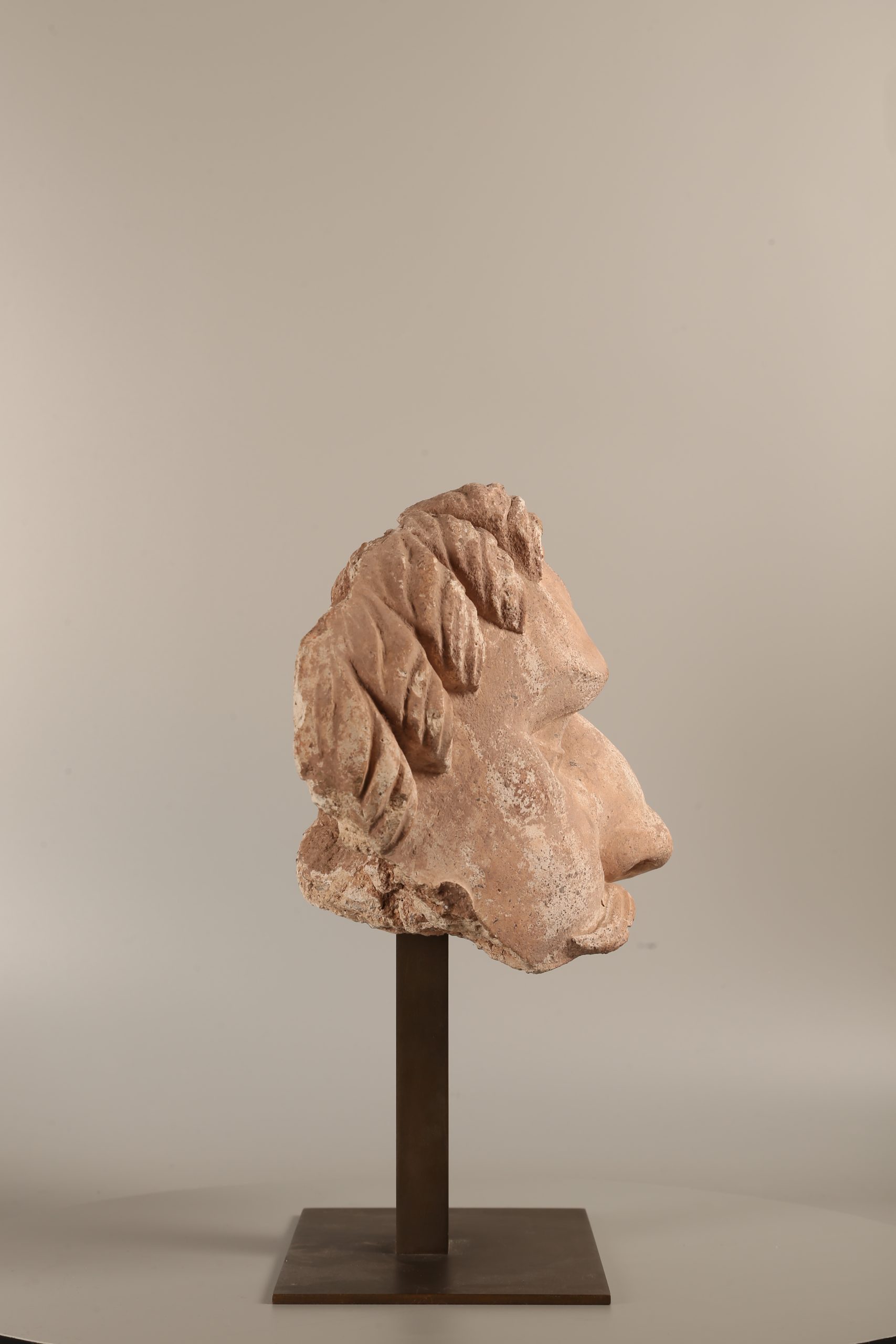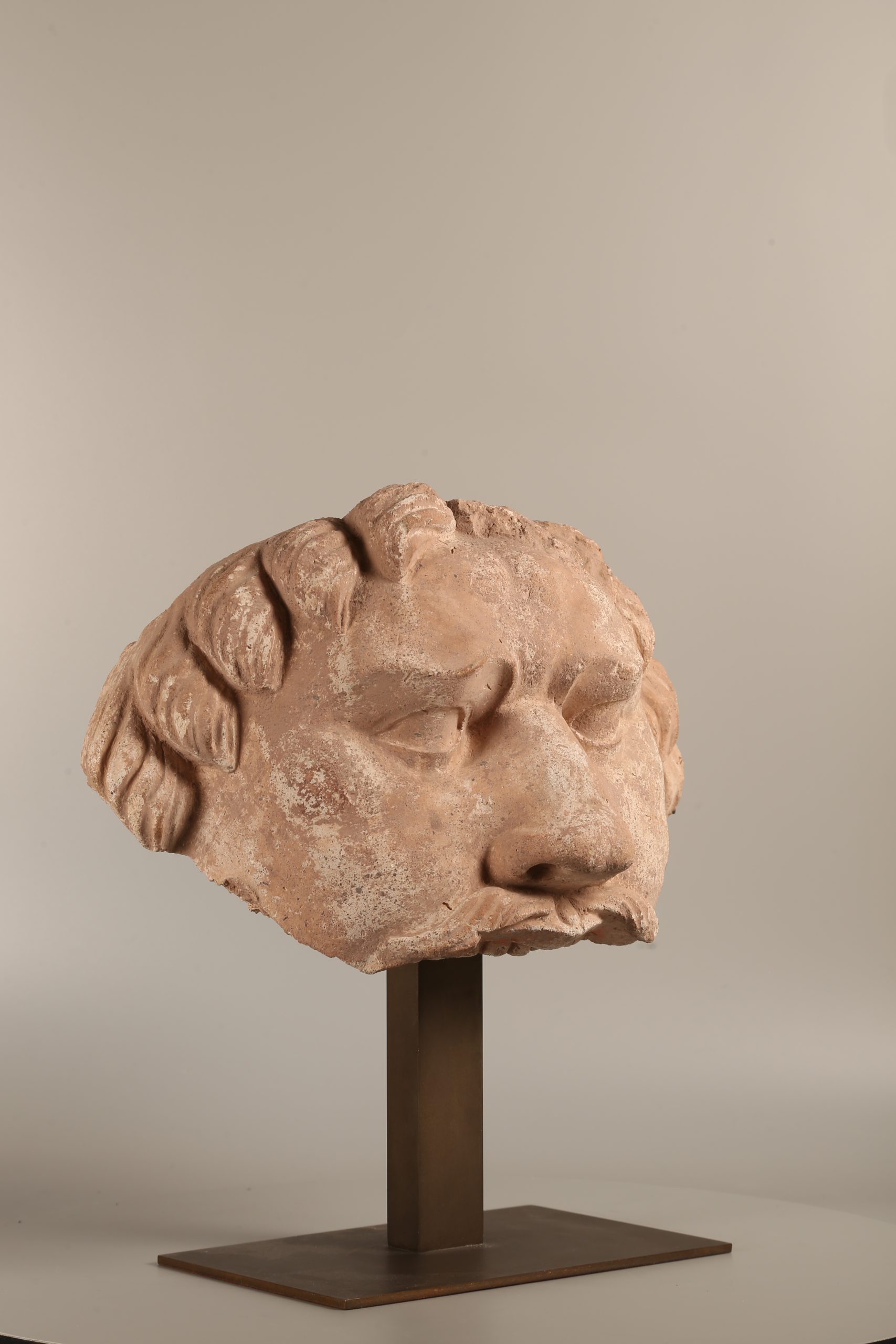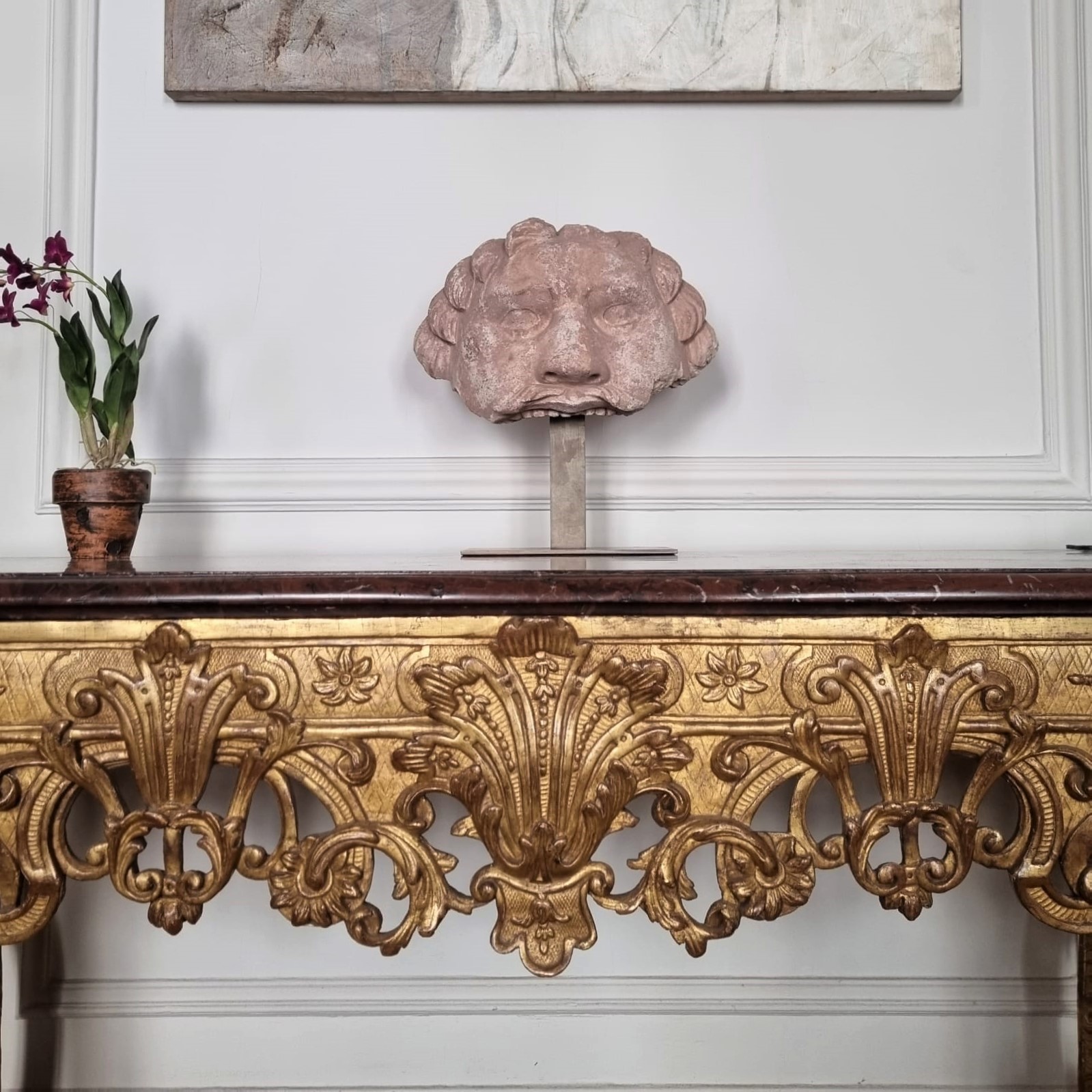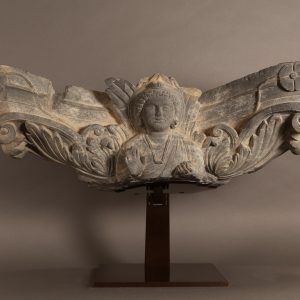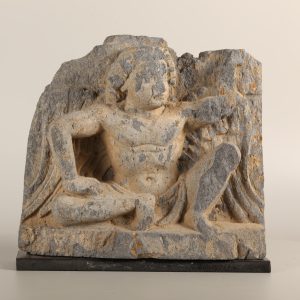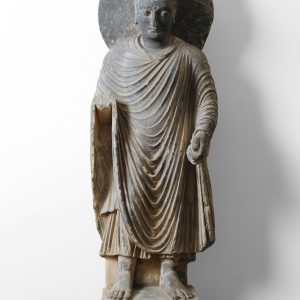Monumental head of a Dvārapāla
12 000,00€
Stucco
Ancient province of Gandhāra
3rd-5th century
D. 24×36 cm or 9 ½ x 14 ¼ in
Detailed file
Vidéo presentation
360° View
Description
A monumental head with an enigmatic iconography
This rare stucco face, unusually imposing in this Gandhāran art, does not leave one indifferent. Paradoxically,its fragmentary condition makes it even more expressive. The obvious width of the face is accentuated by the short strands of hair on either side of a median parting. In the center, the particularly prominent nose seems to reduce the size of the forehead, while the eyebrows frown over wide-open, narrowed and recessedeyes. Finally, just below a thick moustache, a whole row of well aligned teeth can be seen! Who is this character? It is difficult to make a definite identification, but the face of a door guard (Dvārapāla), kept in the Metropolitan Museum in New York (see below), could be related to this one. Both have that open mouth and menacing look that are features found on these temple protectors. Their fierce appearance dissuaded enemies and bad souls from entering the religious edifices.
Stucco: a great freedom of treatment
This amazing expressiveness is made possible by the use of stucco. Used in Gandhāra, as at the sites of Taxila and Hadda, stucco was employed masterfully. Statues were cast in molds and the resulting forms were then finished with a spatula. This technique allows a great plasticity in the treatment and to obtain, as here, faces with a incredibly smooth modelling. The rendering of the eyes, the nose, and the frown of the eyebrows, with a particularly sensitive carving, are very beautiful examples. A thin engobe – still apparent on the whole surface – covered the piece, hiding any disparity and bearing a rich polychromy of red, black and ochre, of which remains are visible here at the level of the eyebrows and the moustache. The red pigments covering the gums are exceptionally well preserved!
Architectural decoration in Gandhāra
This monumental head must have been part of the decoration of the monasteries. The Gandhāran monasteries had two types of areas: courtyards accessible to devotees and crowded with all sorts of ex-voto monuments, such as reliquary tumuli (stūpa) and chapels, and beyond that an area reserved only for monks. In the public areas, the bases of the stūpa, the door and window surrounds, the plinths and sometimes even the risers of the stairs bore numerous reliefs, juxtaposing decorative motifs and apologetic narrative scenes. If this figure is indeed a Dvārapāla, it would have flanked a doorway and protected the entrance.
Provenance: Private collection, Europe.

